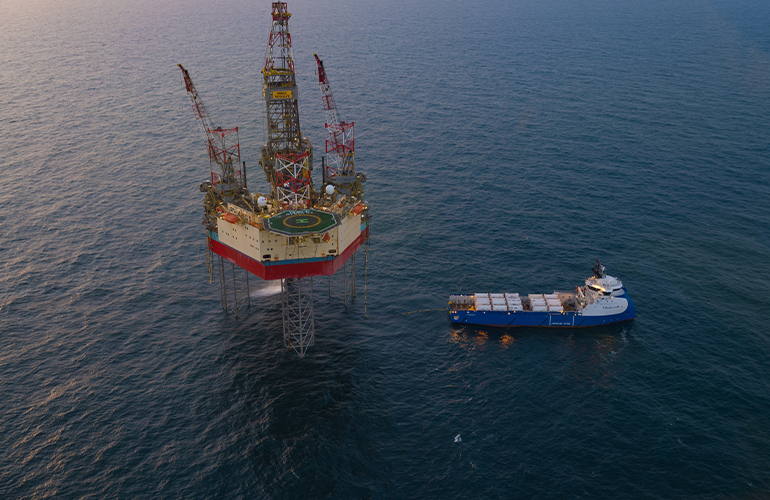In Denmark, INEOS, the day-to-day operator of ‘Greensand Future’ and its partners, Harbour Energy (previously Wintershall Dea), and Nordsøfonden, have announced a Final Investment Decision (FID) into the first commercial phase ‘Greensand Future’ to safely and permanently store carbon dioxide from Danish emitters in a depleted oil field in the Danish North Sea. With storage operations set to begin at the end of 2025/early 2026, this decision paves the way for expected investments of more than US$150 million across the Greensand CCS value chain.
Greensand has entered commercial agreements throughout the entire supply chain, from carbon dioxide (CO2) emitters to logistics, storage, and shipping, backed by the funding necessary to make final injection and permanent storage a reality for Denmark and Europe.
Greensand Carbon Storage is a far better way to decarbonise Europe than deindustrialise. That just moves the problem elsewhere, doesn’t solve it, and destroys jobs. Our Investment in Greensand helps secure a sustainable future for both the planet and the economy, said Sir Jim Ratcliffe, Chairman of INEOS.
To initiate storage operations in the INEOS-operated Nini field in the Danish North Sea at the end of 2025/early 2026, ‘Greensand Future’ will become the EU’s first operational CO2 storage facility intended to mitigate climate change.
The FID paves the way for expected investments of more than US$150 million across the Greensand CCS value chain to scale storage capacity.
This is a breakthrough for Carbon Capture and Storage. Greensand Future will be the first CO2 storage facility in operation in the EU, supporting both Denmark’s and the EU’s climate objectives, Sir Jim Ratcliffe said.
Full industrial CCS value chain
Greensand Future is a full industrial CCS value chain built on a scalable platform that allows for the gradual expansion of storage capacity as CO2 volumes increase.
It is directly applicable to other onshore and offshore storage projects, contributing to the much-needed global acceleration of CCS deployment.
With Greensand Future and the establishment of the full value chain we are sending an important message to the Danish and European emitters currently considering large-scale capture projects, that it can be done, said Mads Gade, Head of Denmark, INEOS Energy.
A key CCS project
The European Commission has estimated that the European Union will need to establish a carbon storage capacity of 250 million tonnes of CO2 per annum by 2040 to achieve the objectives of the Paris Agreement.
CCS is also considered a key technology in reaching the Danish 2045 net-zero targets.
Greensand Future aims to safely capture and permanently store 400,000 tonnes of CO2 per annum as a start, allowing for the gradual expansion of storage capacity towards 2030 as CO2 volumes increase, with a potential to store up to 8 million tonnes of CO2 per annum.
I am pleased that the investment decision for the Greensand Future project has been made. Offering commercial storage as early as late 2025 or 2026 is a highly ambitious but achievable goal. The Greensand Future Project has secured commercial agreements across the entire value chain, demonstrating that large-scale CO2 storage is within reach. This sends a vital signal to the market and can help accelerate the development of CCS not only in Denmark but also within the EU, said Christian Frigast, Chairman of the Board of Nordsøenheden.
Verified CCS value chain
On March 8, 2023, the INEOS-led pilot Project Greensand conducted the world’s first cross-border offshore CO2 storage intended to mitigate climate change, as HM King Frederik of Denmark officially initiated the first injection of CO2 into the Nini field during the pilot phase of Project Greensand.
Last year, we were the first in the world to succeed in developing a value chain for safe and efficient capture, transport, and storage of CO2 across national borders. Now we are proud to take the next step, building on the learnings from the pilot and aiming to deliver a fully operational commercial project by the end of 2025/early 2026, said Mads Gade.
The results of Project Greensand have been verified by the independent and world-leading provider of risk, verification, and standardisation services, DNV.
The thorough technical verification ensures that the stored CO2 remains safely and permanently in the closed Nini West reservoir 1.8 km below the North Sea seabed, as expected.
It is documented and independently verified that Greensand has a well-functioning storage, where large amounts of CO2 that would otherwise have been emitted into the atmosphere can be stored, Mads Gade added.
Biogenic carbon dioxide from RNG production
The CO2 in the first phase of Greensand Future will be captured and liquified at Danish biomethane aka renewable natural gas (RNG), production plants, transported to the Port of Esbjerg, and then shipped by Royal Wagenborg to the Nini field in the Danish North Sea for safe and permanent storage.
Nordsøfonden is in the unique position of participating in all CO2 storage licences in Denmark. With the Greensand Future Project, we look forward to contributing to the realisation of Denmark’s first CO2 storage site whilst at the same time continuing to work on all of our other licences to help achieve Denmark’s climate goals through CO2 storage in the coming years, ended Christian Frigast.



